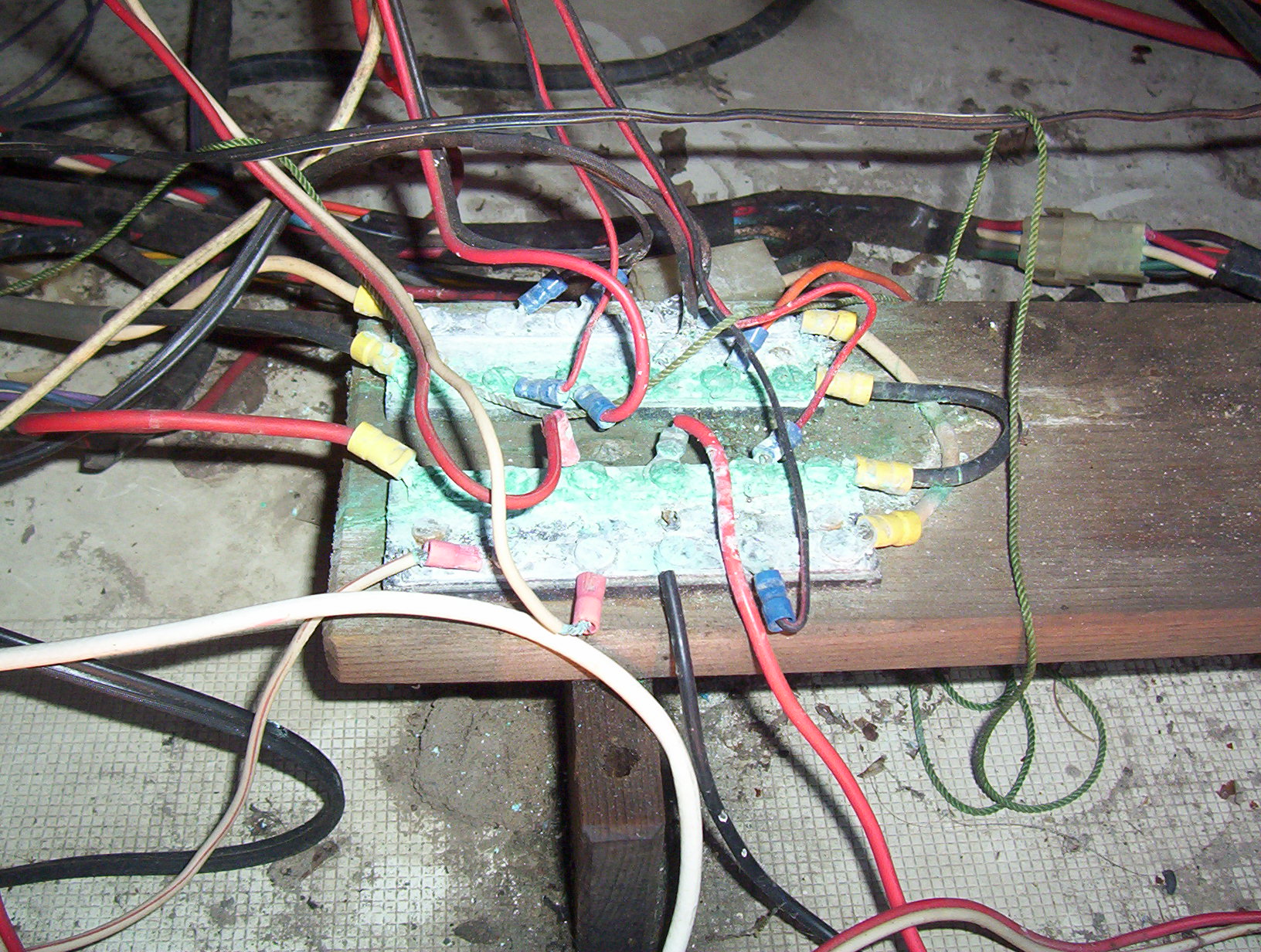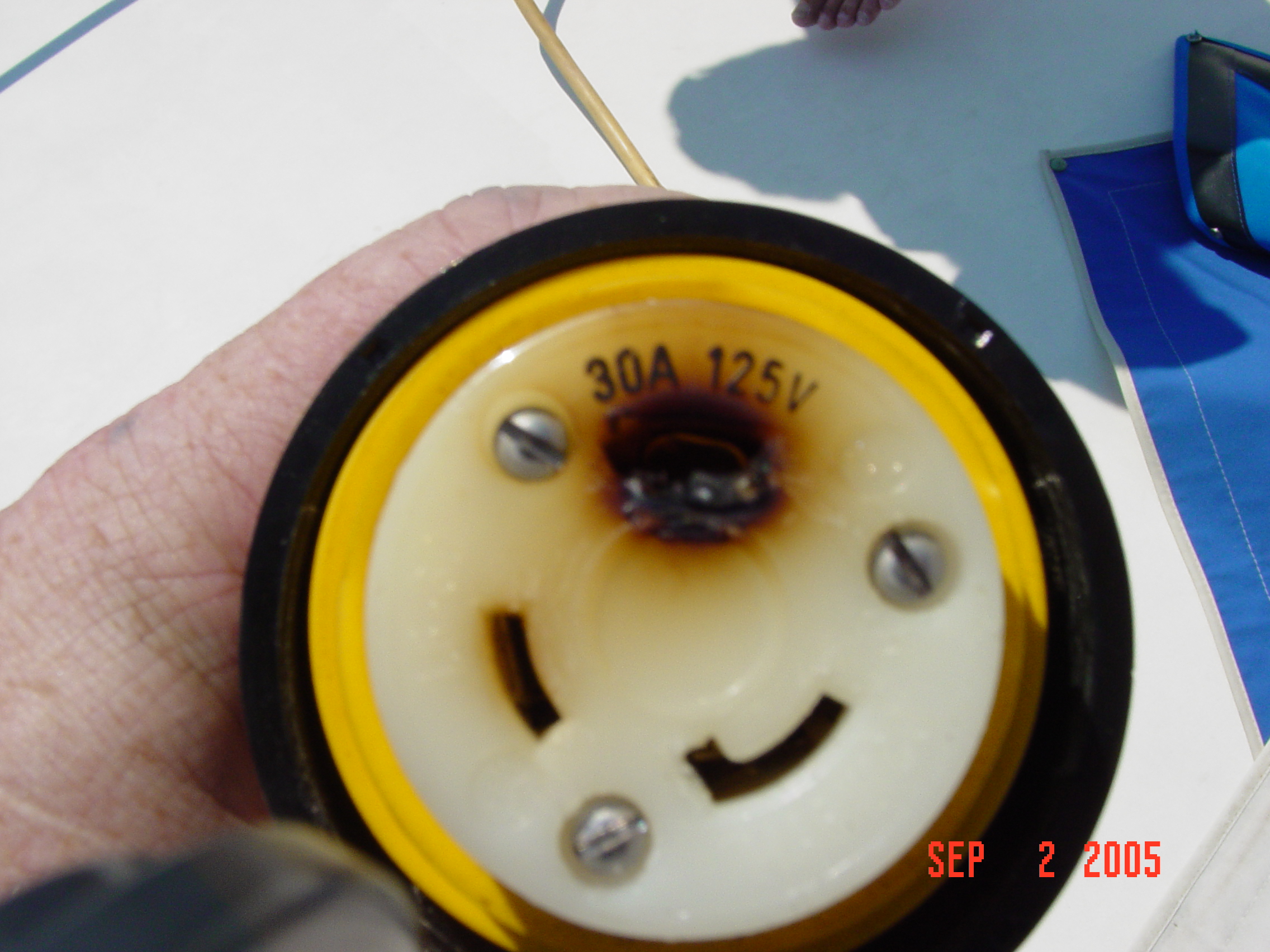Electrical System Tune-up

Regular inspections of a boat’s AC and DC electrical systems can prevent a number of issues, from inoperative electronics to fire. Here’s how to keep those hours on the water both safer and electrically trouble-free.
Safety First
Although the below checks are geared towards the average boater, always seek the advice of a competent marine electrician if needed, preferably one familiar with the standards and recommendations provided by the National Fire Prevention Association (NFPA) and the American Boat and Yacht Council (ABYC).
Battery Basics
Start your inspection of the DC system at its heart – the battery. Check all battery terminals and connectors for issues such as corrosion, loose hardware or broken wires. The use of wing nuts to secure battery cables is not recommended. They’re difficult to properly torque and may work loose due to vessel movement. A better solution is to use stainless steel locking nylon nuts instead.
Clean all battery tops and posts of corrosion with a rag dipped in a solution of water and baking soda (a couple of table spoons to a pint of water) drying afterwards with a clean rag. For severe corrosion pull terminal connectors, brighten both the battery post and inside the connector with a wire brush, then reinstall and spray with a good marine corrosion inhibitor (such as Boeshield’s T-9 Spray Lube or CRC’s Heavy-Duty Corrosion Inhibitor).
Check the electrolyte levels of non-maintenance free wet cell batteries and top off low cells with distilled water.
To accurately test your battery, allow it to charge overnight, disconnect the terminal lugs, let the battery sit for 12 hours or so, then check its voltage. Wet cell batteries should read 12.6 volts or greater, while fully charged gel-cell and Absorbed Glass Matt (AGM) batteries should read slightly higher at 12.8 to 12.9 volts. It’s also a good idea to check and compare voltages with the battery loaded and unloaded, as some “good” battery voltages will drop well below acceptable levels when placed under load (keying a VHF radio for example).

As for installations, all batteries must be properly secured so that movement is no greater than one inch in any direction. They should also be installed in liquid tight, acid- proof boxes or trays (to contain electrolyte spills) and all positive terminals must also be covered with a non-conducive shield to prevent accidental shorting (such as from dropped tools). Installation of rubber terminal “boots” or a plastic battery box lid will satisfy this requirement.
Electrical Panel Inspections
Check circuit breakers by flipping each individually and verifying that their respective circuits are energized. Replace breakers with a worn or loose feel during operation. Some boaters develop the bad habit of using circuit breakers as ON/OFF switches for energized equipment. This not only wears out breakers quicker, but also causes arcing, which can damage both breaker contacts and sensitive electronics equipment.
After securing all power (battery switches, dockside and vessel AC breakers, inverters, auto-start generators, etc) open and inspect the rear of each AC and DC panel for problems such as corrosion, charred terminals, broken wires or exposed conductors. Check all breakers and fuse holders (ensuring everything is tight and secure) and neaten up wiring behind the panel using wire ties or other wire management tools.
All panel connectors should be crimp-on ring terminals, preferably the type with attached heat shrink tubing to prevent moisture entry and corrosion. Replace all electrical tape joints and household type twist-on connectors—both will eventually fall off, leaving exposed, energized conductors.

Wiring
Inspect all spaces for loose, hanging wire runs, damaged conductors and chafe points (particularly where wires pass through bulkheads or other such partitions). Wiring should be supported at least every 18 inches with non-metallic supports except in the engine room, where metallic wire supports are required.
Use of solid copper wiring (such as ROMEX) is not recommended aboard. Solid wire is susceptible to breakage due to vibration, a situation that can result in arcing and possibly fire (particularly with regards to the AC system). Have all solid wiring replaced with multi-stranded, marine grade wire by a competent marine electrician.
AC Shorepower Cord
Start your inspection by turning off your boat’s main AC breaker, then the shore pedestal breaker. Next unplug the AC shore power cord at both ends and lay it on the dock to facilitate your inspection.
Inspect the power cord for chafe, cracks, split insulation or electrical tape repairs, any of which are grounds for replacement. Check plugs and inlets (both at the boat and dock) for discoloration (an indication of overheating) or corrosion on or around pins and plug inlets. This should be done each time you disconnect shore power (prior to getting underway for example) or monthly at a minimum.
Another good practice is checking the “feel” of the connection when plugging in. Those that feel loose or don’t seem to be making firm mechanical contact likely won’t provide good electrical contact either. Avoid using worn or damaged pedestal plugs and report them to marina personal as soon as possible.
Get Familiar
In addition to being a great way to head off potential problems, regular inspections also provide an opportunity to familiarize yourself with each onboard electrical system. Trace out any wiring you’re unfamiliar with and take the time to ensure your electrical system wiring diagrams are up to date, all of which will ease trouble shooting and make you more self-sufficient in the event a problem occurs.
By Capt. Frank Lanier
Captain Frank Lanier is a SAMS® Accredited Marine Surveyor with over 40 years of experience in the marine and diving industry. He’s also an author, public speaker, and multiple award-winning journalist whose articles on seamanship, marine electronics, vessel maintenance and consumer reports appear regularly in numerous marine publications worldwide. He can be reached via his website at www.captfklanier.com.


